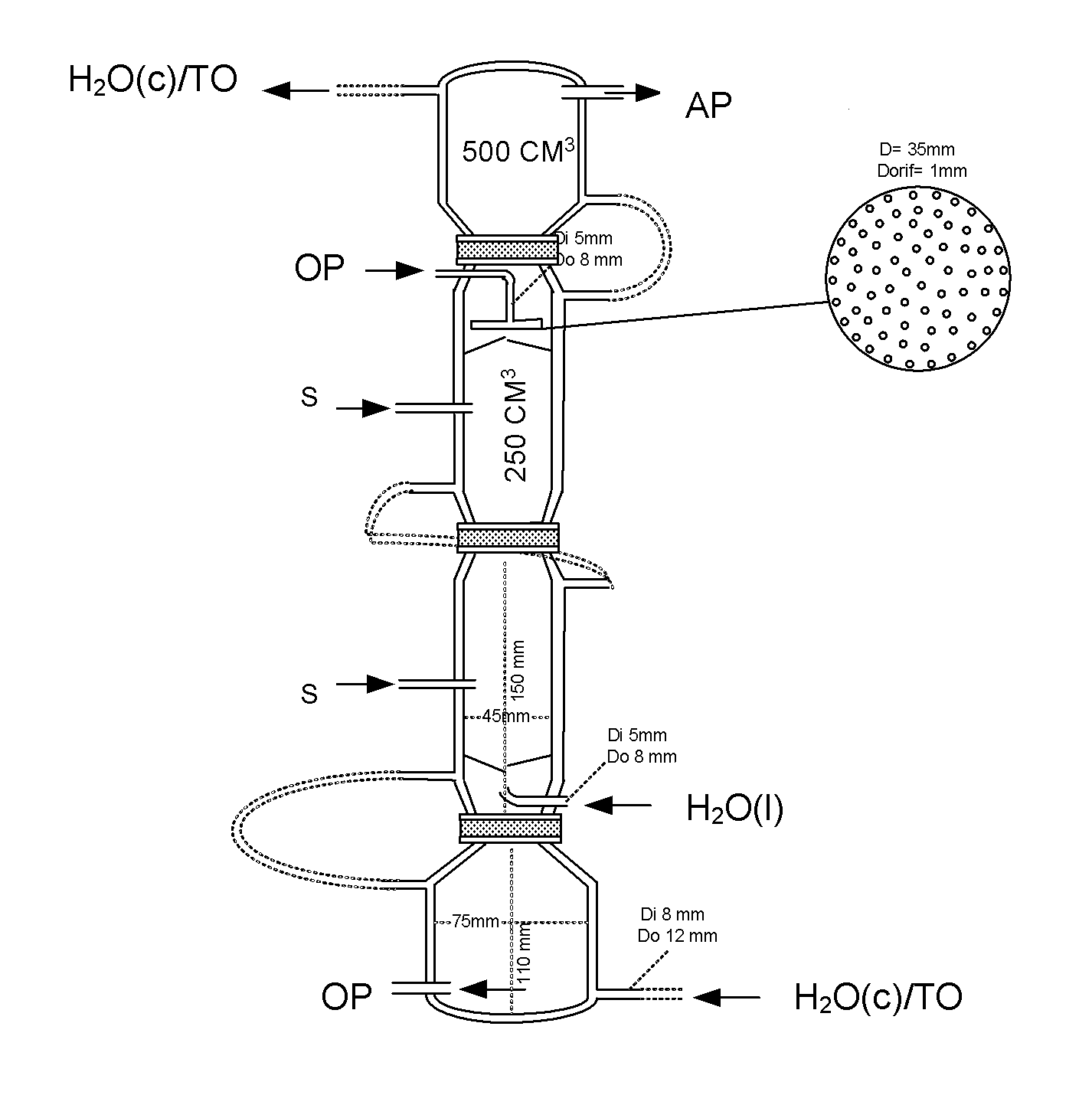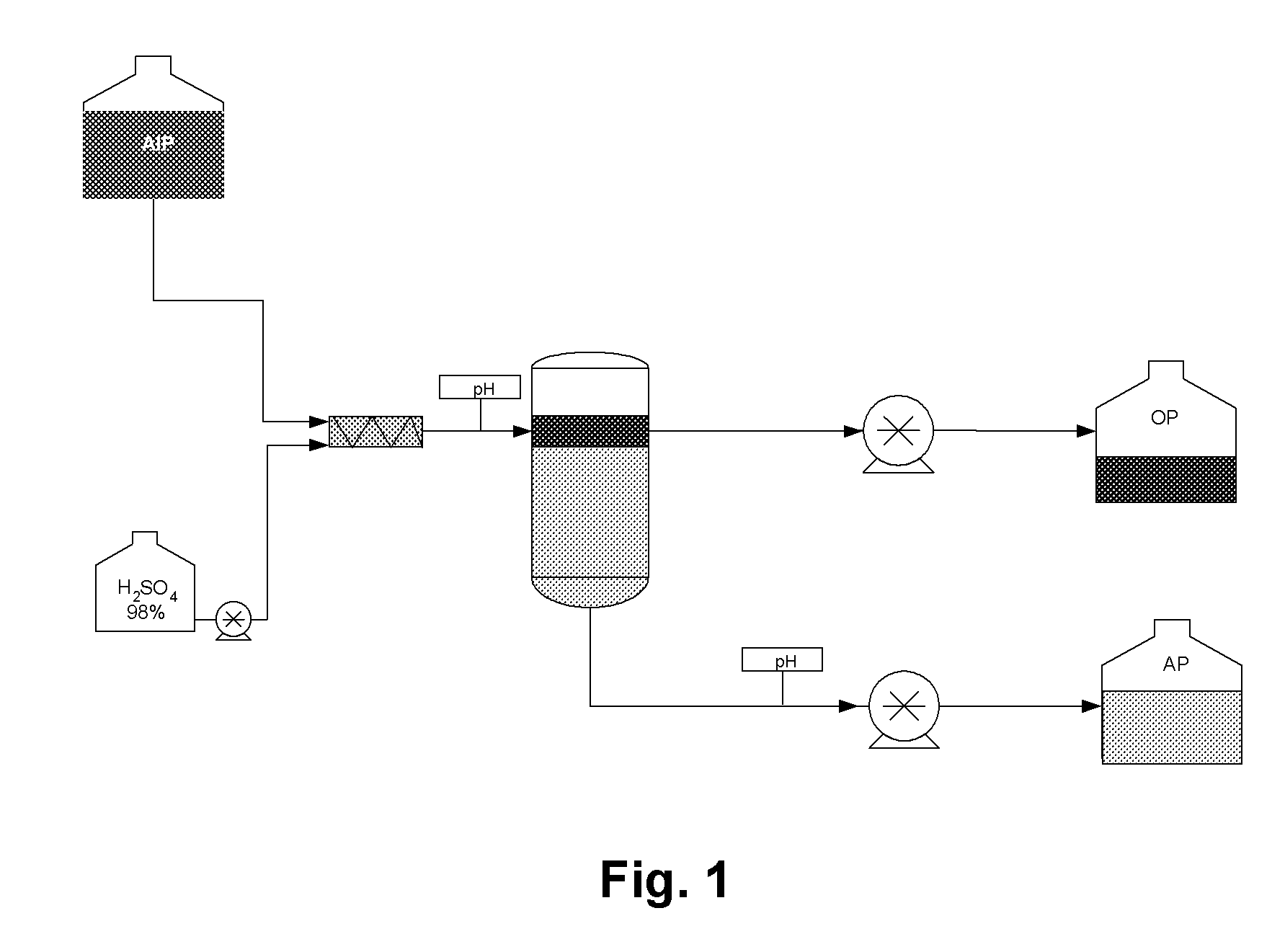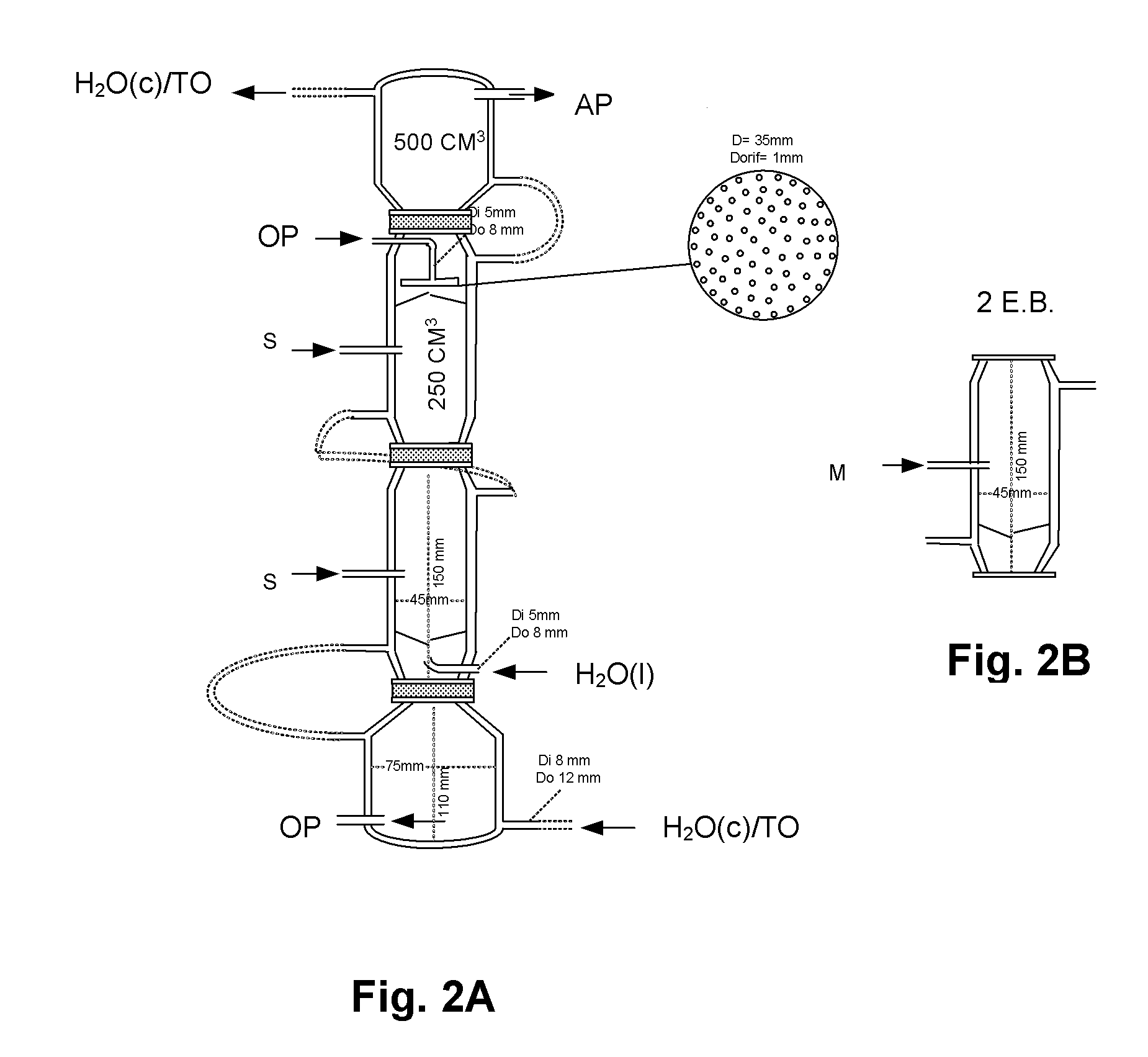Revaluation of aqueous waste streams in the propylene oxide/styrene co-production process
a technology of propylene oxide and co-production process, which is applied in the direction of multi-stage water/sewage treatment, separation process, chemical process, etc., can solve the problems of high cost of waste water purification treatment, inability to reuse said matter in process or energy generation process, and inability to recover said matter, etc., to achieve high contaminant load, increase the possibility of industrial recycling, and preserve the effect of ecological balan
- Summary
- Abstract
- Description
- Claims
- Application Information
AI Technical Summary
Benefits of technology
Problems solved by technology
Method used
Image
Examples
example 1a
Treatment of the Alkaline Purge with Sulphuric Acid at 60° C. at pH 6
[0045]100 grams of alkaline purge were added with sulphuric acid concentrated at 60° C. until reaching a final pH of 6. After the acidification the mixture was taken to an lagged decanter at 60° C. and was left to decant for half an hour. After this time, phase separation was not observed.
example 1b
Treatment of the Alkaline Purge with Sulphuric Acid at 60° C. at pH 5.5
[0046]100 grams of alkaline purge were acidified with sulphuric acid concentrated at 60° C. until reaching a final pH of 5.5. After the acidification the mixture was taken to an lagged decanter at 60° C. and it was left to decant for half an hour. Later the phases were separated producing 5 grams of organic phase (upper phase) and 95 grams of aqueous phase (lower phase). The COD reduction produced in the aqueous phase was 38% and the organic phase produced has a water content of 28.24% and a sodium content of 16775 ppm.
example 1c
Treatment of the Alkaline Purge with Sulphuric Acid at 60° C. at pH 5
[0047]100 grams of alkaline purge were acidified with sulphuric acid concentrated at 60° C. until reaching a final pH of 5. After the acidification the mixture was taken to an lagged decanter at 60° C. and it was left to decant for half an hour. Later the phases were separated producing 6.2 grams of organic phase (upper phase) and 93.8 grams of aqueous phase (lower phase). The COD reduction produced in the aqueous phase was of 39.5% and the organic phase produced had a water content of 27.45% and a sodium content of 15245 ppm.
PUM
 Login to View More
Login to View More Abstract
Description
Claims
Application Information
 Login to View More
Login to View More - R&D
- Intellectual Property
- Life Sciences
- Materials
- Tech Scout
- Unparalleled Data Quality
- Higher Quality Content
- 60% Fewer Hallucinations
Browse by: Latest US Patents, China's latest patents, Technical Efficacy Thesaurus, Application Domain, Technology Topic, Popular Technical Reports.
© 2025 PatSnap. All rights reserved.Legal|Privacy policy|Modern Slavery Act Transparency Statement|Sitemap|About US| Contact US: help@patsnap.com



